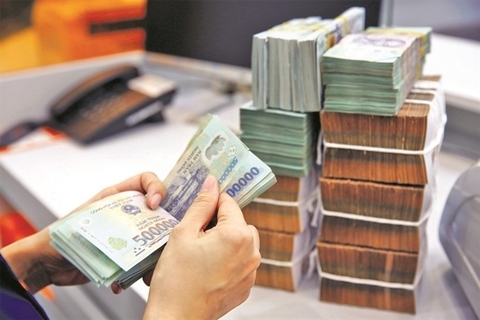Keeping public debt below 60 per cent of GDP by 2030 targeted
Keeping public debt below 60 per cent of GDP by 2030 targeted
Viet Nam is targeting to control public debt below 60 per cent of gross domestic product (GDP) by 2030 to ensure debt safety and national financial security.

The goal was highlighted in the public debt strategy by 2030.
Deputy Minister of Finance Ta Anh Tuan said yesterday at a two-day workshop held in Thanh Hoa that the public debt strategy issued on April 14 played an important role in the socio-economic development in the 2021-30 period, which serves as an important basis for continuing sustainable and efficient public reform management and ensuring debt safety and national financial security.
Under the strategy, public debt would not exceed 60 per cent, government debt 50 per cent and foreign debt 45 per cent of GDP, and the amount for debt repayment would not exceed 25 per cent of the total budget revenue.
The strategy targeted that GDP would expand at an average of seven per cent per year with GDP per capita reaching US$7,500 by 2030 and a budget deficit at around three per cent of GDP.
The ministry’s statistics showed that public debt expansion decreased from an average of 18.1 per cent per year in the 2011-2015 period to 6.7 per cent in 2016-20. Public debt was at 55.9 per cent of unrevised GDP by the end of 2020, compared to the peak of 63.7 per cent in 2016, and 43.1 per cent of revised GDP by the end of 2021.
The structure of public debt had been adjusted in a more sustainable direction with the percentage of external debts falling from 61 per cent of the Government’s total debt in 2011 to 33 per cent in 2021.
Debt repayment was always guaranteed on time, which contributed to improving the country’s credit rating as S&P recently announced to raise Viet Nam’s national credit rating from BB to BB+ with a stable outlook and increasing the fiscal room to strengthen the economy’s resilience to macro shocks, the ministry said.
According to Carolyn Turk, World Bank director for Viet Nam, Viet Nam’s public debt strategy for 2030 was very important because it related to both fiscal policies as well as public debt management. The strategy also guided the Government’s borrowing activities after Viet Nam become a middle-income country with the goal of becoming a high-income country by the end of 2045, which would require a huge investment in infrastructure to maintain economic growth of an average of 5-6 per cent per year in the next 20 years.
She said that attention should be paid to improving the efficiency of local government debt management, pointing out that Viet Nam had not yet developed a medium-term local government debt management strategy and had not assessed risks before borrowing.
Truong Hung Long, director of the ministry's Department for Debt Management and External Finance, said that Viet Nam had graduated from IDA, the World Bank’s concessional finance window, meaning that the country no longer had access to high-preferential capitals as before and Viet Nam would have to rely more on market tools to raise capitals.
Therefore, it is important to have prudent and flexible medium and long-term borrowing and debt payment strategies to limit negative long-term consequences, Long said, adding that shocks like the COVID-19 pandemic always required reserve finance in the short and medium terms.
According to the strategy, the focus would be on enhancing and strengthening the management of finance, budget and public debt, improving the efficiency of loan use, ensuring debt repayment capacity and restructuring debt portfolio as well as enhancing digital transformation in public debt management.
























